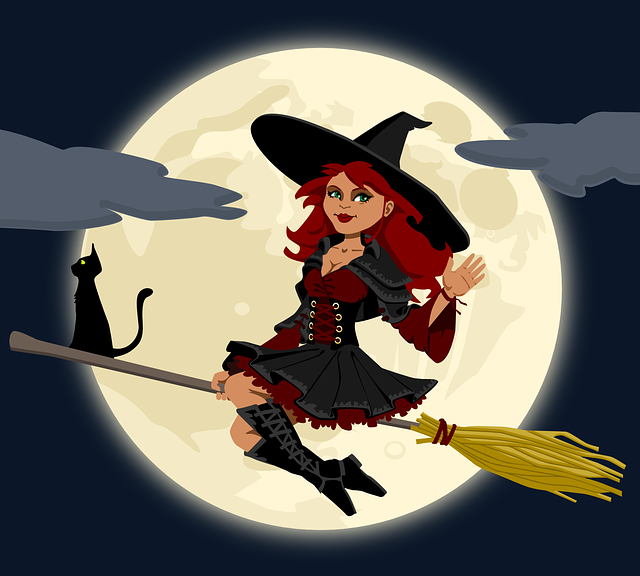By Tim Lambert
Early Halloween
Our word Halloween is derived from the old words All Hallows Eve because it was the eve of All Hallows Day (1 November). Hallow is an old word for saint and today we call 1 November All Saints Day. In the 4th century, the Church began to celebrate a feast for all the martyrs. At first, it was celebrated on the first Sunday after Pentecost (in late May or early June). The Eastern Orthodox Churches still celebrate it on that day.
However in the West in 609 or 610 Pope Boniface IV moved the feast of all martyrs to 13 May. Then in the 8th century, Pope Gregory III (731-741) made 1 November a feast to remember all saints and it became known as All Saints Day or All Hallows Day.
After the 16th Century Reformation, All Saints Day and Halloween were virtually forgotten in most of England, along with most other saints’ days.
However, Halloween continued to be observed in Scotland and Ireland. There was a belief that ghosts and witches were particularly active on that day.
Modern Halloween
In the 18th century in Ireland Halloween became a day for playing pranks like blocking doors with carts, removing gates, throwing vegetables at doors, and covering chimneys with turf. There were similar mischief-making days in Britain at different times of the year.
In the mid-19th century, Irish and other immigrants took Halloween customs to the USA. Playing pranks such as moving farm animals, removing gates, etc. were common.
The Irish also hollowed out turnips and put candles in them. In the USA the turnip became a pumpkin.
In the early 20th century little attention was paid to Halloween in Britain. However, in the late 20th century the festival of Halloween was revived in Britain with parties becoming popular. The American customs of trick-or-treating and carving pumpkins at Halloween were imported at that time. Today Halloween is a very popular festival both in the USA and in Britain.
Some Halloween Facts
In 1827 Jane Webb wrote a book about a mummy coming back to life. It was called The Mummy! A Tale of the Twenty-Second Century. The first film about an Egyptian mummy coming back to life was made in France in 1899. It was called Robbing Cleopatra’s Tomb.

In the 16th century pieces of Egyptian mummies were used as medicine.
The first English novel about a vampire was The Vampyre by John Polidori, published in 1819. It was about an aristocratic vampire. Dracula by Bram Stoker was published in 1897. The first woman to write a story about vampires was Elizabeth Caroline Grey in 1828. She wrote a story called The Skeleton Count or The Vampire Mistress.
The idea of werewolves is very old. The Ancient Greeks and Romans wrote about men who could transform themselves into wolves. People also believed in werewolves in the Middle Ages. But during the witch trials of the 16th and 17th centuries being a werewolf was punishable by death as it was considered a form of witchcraft. The first film about a werewolf was made in 1913. It was just called ‘The Werewolf’.
Frankenstein by Mary Shelley was published in 1818. The first film version was made in 1910.
The last person in Britain to be imprisoned for witchcraft was a medium called Helen Duncan in May 1944. She was convicted under the Witchcraft Act of 1735, which made it a crime to fraudulently claim to summon up spirits. The last person to be convicted under the act was another medium, Jane Rebecca Yorke. She was convicted in September 1944. She was fined 5 pounds (a large sum of money at that time). The act was repealed in 1951.
One of the oldest ghost stories was told by the Roman writer Pliny in the 1st century AD. He claimed that a house in Athens was supposed to be haunted. The owner was so afraid he put the house up for sale at much less than its market value. When a philosopher called Athenodorus heard about it he decided to investigate and spent the night in the house. He heard the rattling of chains and saw a ghost. He followed the ghost into a garden where it disappeared. Athenodorus marked the spot where the ghost disappeared. He told a magistrate who dug at the spot and found the remains of a man wearing chains. The unfortunate man was given a proper burial at public expense and the haunting ceased.
Last revised 2024